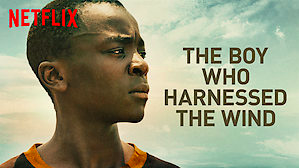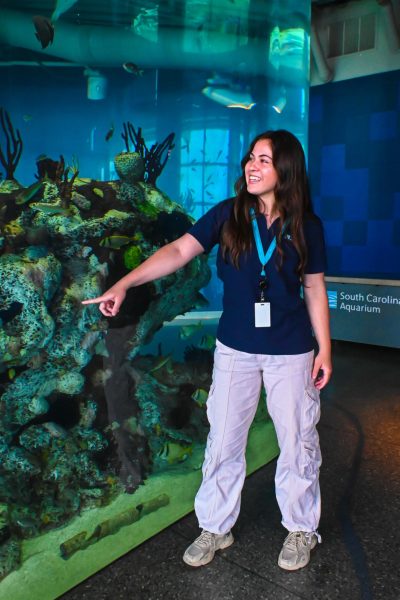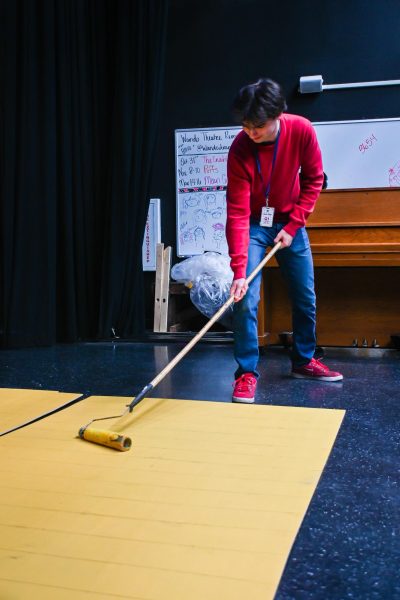‘The Boy who Harnessed the Wind’ is memorizing and worthwhile
There is nothing more cinematically satisfying than the “where are they now” situated at the end of movies. Remember the Titans, The Blind Side and Freedom Writers, to name a few successfully used this non-fiction movie tradition and left me brimming with optimism.
Director Chiwetel Ejiofor’s original movie The Boy who Harnessed the Wind follows this cliche uniquely. He doesn’t even mention the story is based off of true events until the movie is over. By then, I have already told myself “well, I mean it’s definitely good to be true, so it’s not real.”
Boy did he fool me.
The Boy Who Harnessed the Wind, written by the boy himself, William Kamkwamba tells the story of a 13-year-old school boy’s innovative way of overcoming famine in a Malawi village. With a turbine, miscellaneous bicycle parts and metal scraps he crafts the windmill that brings water back to sequestered farming grounds.
The intense acting of rookie actor Maxwell Simba, who plays William Kamkwamba, is a reason to watch the movie itself. Simba faithfully cued the tears and hopeless smiles as tragic events in the movie played out. And his emotions were not mindless like the one’s in try-hard rom-com. He was really acting. As a young actor that means he not only devoted himself physically but mentally. The poor kid had to act horrified with the fact that his whole village is decimated. Truth is — he probably was horrified with the fact that this actually happened.
Simba’s father in the film, who was played by director Chiwetel Ejiofor, braved the same emotions that he did. But of course being more experienced in film, he balanced the most difficult role — the one where the pessimist has to become optimistic of the only hypothetical that could save the family and the village — a disassembled bicycle.
The other actors like Lily Banda and Joseph Marcell played their parts the dutifully. I would not exactly call their acting spectacular but its fitting to say the least. Lily Banda successfully depicts Annie — a teenage daughter who is stuck between helping her family’s fate and living life as a college student. Meanwhile Marcell shows the chief– someone who is tied to the Malawi village regardless of fate and fortune.
The disturbing feature of the film was not sloppy cinematography or freeze-dried acting. It was culture. In this village, The Gule Wamkulu (spiritual dancers) will appear on sacred grounds wearing stilts and doll heads to pray to their ancestors. Being me, an uncultured teenage American girl, I was really freaked out (just like clowns). But once I learned of their meaning to the community — I looked past the scary face and intricate clothing and recognized a culture I wanted to learn more about.
I know what your thinking: “farming, foreign film, doll-head dancers… No, not for me.” But all I can ask you is to give it a chance. After watching the trailer, I was hesitant to watch the movie. I, like you did not want to get out of my realm of cheesy American rom-com movies. Once I hit play and the movie started I was sucked in. Mesmerized. The culture, hardships, and mobility of the story sucked me in. Now, as a proud foreign-film, non-fiction movie watcher (thanks to this movie) I feel more cultured and excited to travel in years to come.




![This was the team’s first time competing and Wando’s first time back in years. “Getting fourth place on a national level is something that I would say majority of high school students will never accomplish in their career... So for Wando, being our first year back, winning state and then getting a championship placement [at] nationals was better than I could even imagine,” Gordon said.](https://tribaltribune.org/wp-content/uploads/2024/06/NPSI244236_-600x400.jpg)
![While founding the Middle East and Muslim Club, Junior Marym Abouelella wanted to create a space for students from similar backgrounds to connect
and grow. “One thing we had [talked about] was a Culture Day... I’ve already spoken to [admin Kristy] Williams that they’re going to implement here [at
Wando] to represent everyone’s cultures at once,” Abouelella said](https://tribaltribune.org/wp-content/uploads/2024/05/FINAL-600x587.jpg)






